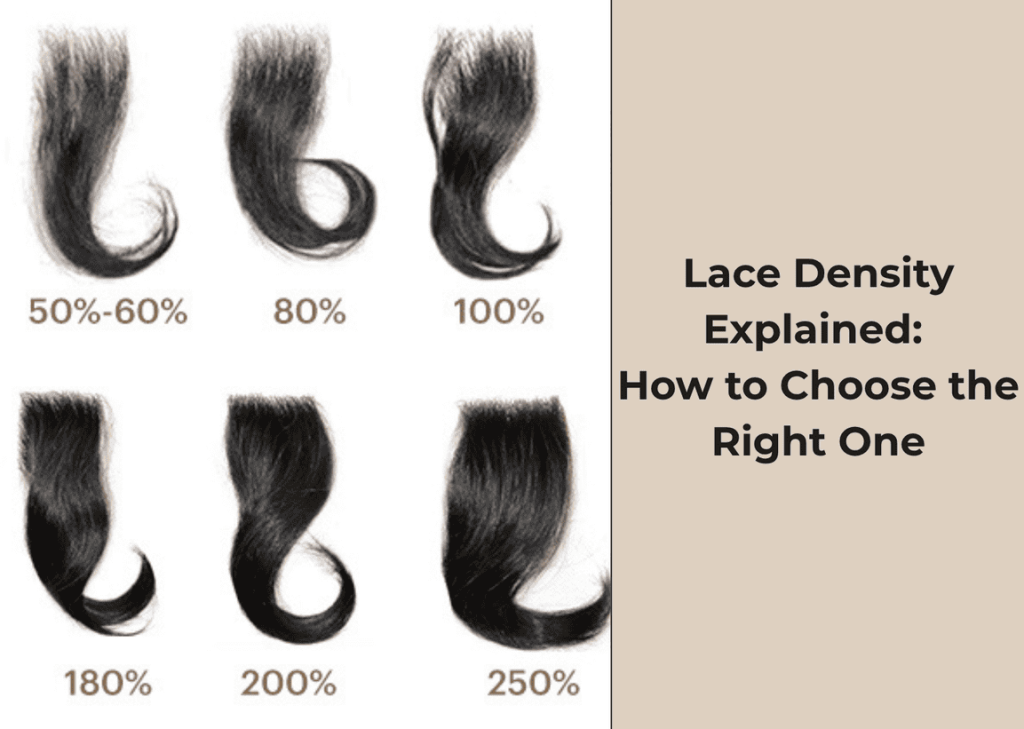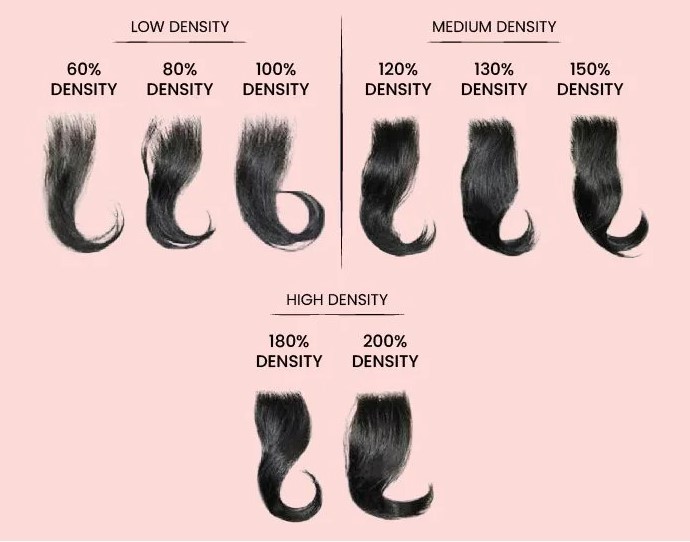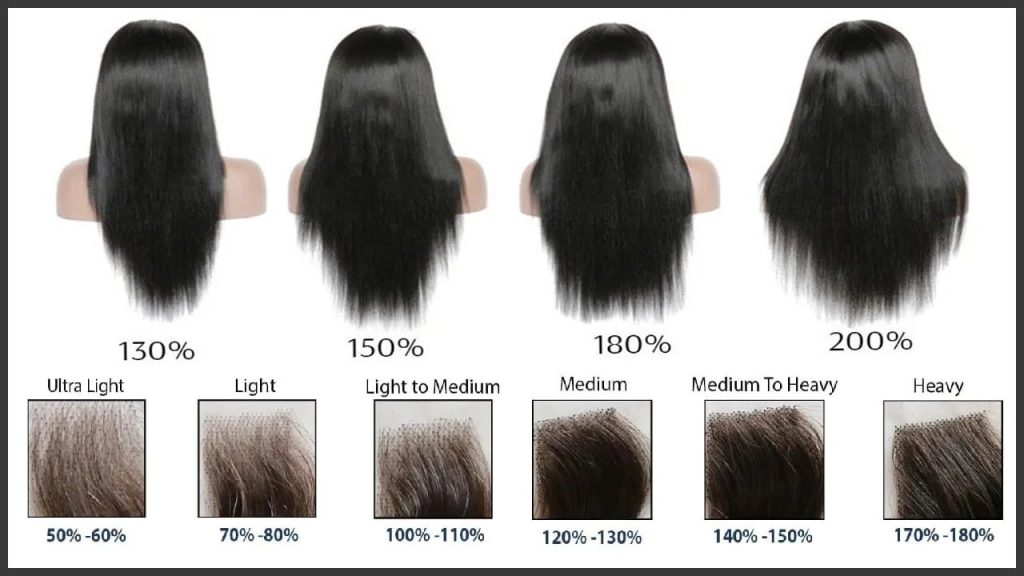Hair Knowledge
Lace Density Explained: How to Choose the Right One
When shopping for a lace wig, one important detail that often gets overlooked is lace density. While most people focus on lace type or hair texture, the density of the hair on the lace plays a huge role in how natural the wig looks and feels.
In this guide, we’ll explain what lace density means, how it affects your wig’s appearance, and how to choose the right density based on your style, face shape, and lifestyle.
I. What Is Lace Density?
Lace density refers to how much hair is attached to the lace base of a wig. It indicates the fullness or thickness of the hair on the wig, and it’s usually expressed as a percentage. This percentage helps simulate the natural density of real human hair growing from the scalp.
For example:
-
100% density mimics the look of thin or fine natural hair.
-
150% density is considered medium or natural fullness.
-
180% or 200% density creates a full, voluminous appearance.
The higher the percentage, the thicker and fuller the wig will look.
How It Works
Think of lace density as how closely the strands are sewn together on the lace cap:
-
Lower density wigs have fewer hair strands per square inch of lace, giving a lightweight and breathable look.
-
Higher density wigs have more strands packed into the same space, resulting in a fuller, voluminous appearance.
This measurement applies to all lace wigs—including lace frontals, full lace wigs, closures, and 360 lace wigs—and affects both how the wig looks and how it feels when worn.
Why It Matters
The density of your lace wig plays a crucial role in:
-
How natural the wig appears on your head
-
How well it blends with your real hairline or face shape
-
How easy it is to style, especially for updos or parting
-
How comfortable it feels during extended wear
For salon professionals and wig wearers alike, understanding lace density ensures you can match the wig to the client’s expectations, face structure, and hair goals.
Common Lace Wig Densities
Here are the most common density options available:
| Density Level | Description | Best For |
|---|---|---|
| 80% – 100% | Light or extra light density | Elderly clients, medical hair loss, or very fine hair |
| 120% – 130% | Natural/medium-light density | Everyday wear, natural appearance |
| 150% | Standard/full natural density | Most face shapes and everyday styling |
| 180% | Full volume | Glamorous styles, curls, body wave |
| 200% – 250% | Extra heavy density | Stage, photography, drag, dramatic looks |
II. How to Choose the Right Lace Density
1. Match Your Natural Hair Density
The most natural-looking wig is one that resembles your own hair.
- If your natural hair is fine or thinning, a wig with 100%–120% density will give the most realistic look without appearing bulky.
- If you have medium to thick natural hair, consider 130%–150% density to mimic your usual volume.
- For those with naturally very thick or coarse hair, higher densities like 180%–200% will help maintain consistency when blending with leave-out or edges.
Tip: Matching your wig’s density to your real hair can also make transitions between wearing and not wearing the wig feel more seamless.
2. Think About Your Desired Hairstyle
Your wig’s density should support the style you plan to wear most often.
- Straight styles often look better with lower densities (120–150%), since too much volume can make them appear unnatural.
- Curly or wavy styles tend to appear fuller even at medium densities, so you can often stay at 130–150% without going too heavy.
- For voluminous styles (like glam curls, high ponytails, or bridal updos), consider 180%–200%+ to maintain the desired fullness.
3. Consider Your Face Shape and Frame
Not all densities suit every face shape equally. The wrong choice can make your features look unbalanced or exaggerated.
- For petite or narrow faces, high-density wigs (180%+) may look too heavy or overpowering.
- For round or fuller faces, medium to high densities (150–180%) help create volume and elongate the look.
- If you wear glasses, lower-density wigs are often more comfortable and less bulky around the ears.
4. Lifestyle and Frequency of Use
Ask yourself: How often will you wear the wig? For what occasions?
- For daily or long-hour wear, go for a lightweight, breathable density like 120–130%. These feel more natural and put less pressure on the scalp.
- For special events, photo shoots, or performances, opt for 180–250% density for dramatic, eye-catching volume.
- If you’re in a hot or humid climate, lighter densities will also be more comfortable and sweat-resistant.
5. Skill Level and Wig Experience
If you’re a beginner to lace wigs, higher densities may be harder to manage during styling, installation, and maintenance.
- Beginner-friendly: 120%–150% – easier to apply, lighter, and more manageable.
- Advanced or professional users: 180%–250% – suitable for those who can properly pluck, bleach, and style the wig to avoid bulkiness.
6. Budget Considerations
Higher density wigs use more hair—so they cost more. If you’re working with a budget, you can:
- Choose 130%–150% density for a balance of volume and price.
- Opt for lower density and add volume later with bundles or clip-ins if needed.
🔚 In Short
The perfect lace density isn’t “one size fits all.” The ideal choice depends on your hair goals, natural features, and daily needs. Whether you’re aiming for subtle realism or red carpet drama, picking the right density helps your wig look more believable—and feel like a natural part of you.
FAQs About Lace Density
Q: What is the most natural-looking lace density?
A: 130%–150% is widely considered the most natural for everyday wear.
Q: Can I change the density after purchase?
A: No. Wig density is fixed during production. However, you can thin out a wig or add bundles for volume.
Q: Is higher density always better?
A: Not necessarily. Higher density means more hair, but it doesn’t always look realistic. Balance is key.
Conclusion
Understanding lace density is crucial to getting a wig that looks and feels just right. Whether you’re after subtle elegance or full-on glam, choosing the right density helps your lace wig blend seamlessly with your look.
👉 Looking for a custom lace wig with the perfect density?
Explore premium lace wigs in all densities at nhairfactory.com, tailored for both professionals and everyday wearers across Europe and beyond.





